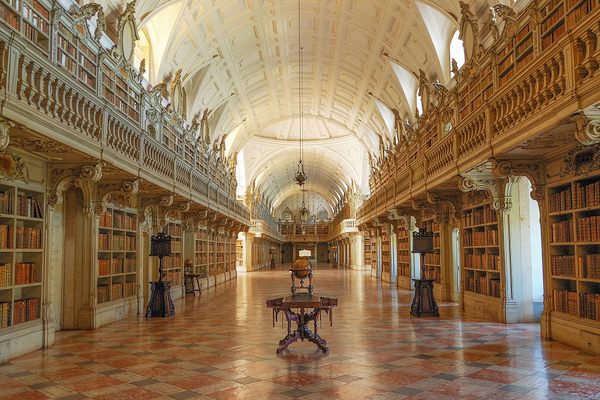The World’s Rarest Raptor Hangs On Thanks to an Invasive Species
The Mauritius kestrel benefits from a plant that’s harming the island’s ecosystem, complicating conservation efforts.
This article is from Hakai Magazine, an online publication about science and society in coastal ecosystems. Read more stories like this at hakaimagazine.com.
In 1974, the Mauritius kestrel—a photogenic bird with a speckled white breast and a vibrant red back and crown—came frighteningly close to extinction. Only four individuals remained. Thanks to decades of captive breeding on the Indian Ocean island of Mauritius, the kestrel population climbed to 1,000 birds. Half a century later, as their numbers once again decline, another species is helping the charismatic raptors hang on: the traveler’s tree, a palmlike plant in the genus Ravenala.
But traveler’s trees are invasive to Mauritius and are causing problems for other native species in the ecosystem. Conservationists are now faced with a challenge: how to remove the plant without harming the kestrels.
“It’s a fine balance,” says Vincent Florens, an ecologist at the University of Mauritius and the lead author of a new study that describes the beneficial relationship between traveler’s trees and the birds. “We might weed [out Ravenala] in a heavy-handed way and, with very good intentions, actually cause more harm.”
The kestrel’s first brush with extinction came after centuries of logging had stripped most of the island’s evergreen forest, wiping out the large trees with cavities that the diminutive raptor needs for nesting. Introduced predators including ship rats, feral cats, and mongooses sped up the population’s decline, as did the use of DDT, a chemical insecticide that weakened the bird’s eggs and caused many young to die before hatching. Now, after three decades of relative stability, the species has fallen to as few as 350 birds—possibly due to inbreeding and ongoing habitat loss.
In their study, Florens and his colleagues observed that traveler’s trees provide ideal habitat for the kestrel’s main prey, the blue-tailed day gecko and the Mauritius upland forest day gecko. The vibrantly colored cold-blooded lizards bask on the plant’s stiff leaves, which grow in spectacular vertical fans, and dominant male geckos defend territories from the tops of the stems, just as they once did on native hurricane palms, which are now extremely rare in the wild. Ravenala nectar and fruit also attract insects that the geckos eat. Geckos are now thriving. “If you and I were geckos, the Ravenala would be the closest we could find to a palm in those forests today,” says Florens.

And kestrels are chowing down. Florens and his team found that geckos made up 70 percent of the birds’ diet at 28 nesting sites in southeast Mauritius. The lizards are rich in the calcium needed to strengthen kestrel eggs, and birds with nests surrounded by traveler’s trees produced more fledglings. However, Florens cautions that the invasive tree also has immense costs for local biodiversity.
Traveler’s trees—native to Madagascar, 1,000 kilometers (about 700 miles) to the west—were first introduced to Mauritius in 1751. The plant’s seeds, sheathed in bright-blue papery coats, caught the eye of fruit-eating bats and birds that spread traveler’s trees across the island.
Along with other invasive plants, including strawberry guava trees from Brazil, traveler’s trees crowd the forest understory, pushing out native plant species and the beetles, butterflies, and other insects that have evolved to feed on them. In turn, this means less food for small insectivorous bats and birds like flycatchers, bulbuls, and white-eyes. Florens estimates that the species negatively impacts thousands of different species on Mauritius.
But deciding whether or not to remove plant invaders like traveler’s trees is not as straightforward as it may appear from the outside, says Pete McClelland, a New Zealand–based island restoration specialist who was not part of the Mauritian study.
“While many of the changes following an eradication are reasonably predictable, others are uncertain,” McClelland says. Removing traveler’s trees could cause the kestrel and gecko populations to plummet, for instance, or create space for a previously unknown weed to run rampant. Ultimately, though, scientists may need to make a judgement call and intervene without knowing the exact outcome, he adds.
Slowing down the removal would allow kestrels and geckos to adjust, McClelland says.
Florens agrees that traveler’s trees should be removed gradually. He advocates replacing the plants with comparable native species, such as hurricane palms, that will provide the same benefits to the geckos. In the 18th century, before widespread logging, the palms were so numerous that French settlers on Mauritius described the silhouette of their feathery crowns protruding through the dense tree canopy as “a forest on top of a forest.”
But wild hurricane palms were nearly wiped out by rats that consumed the seeds and islanders who harvested the shoots for hearts of palm salad. Although the trees are now widely cultivated in plantations, gardens, and along roadsides, only 18 or so remain in the island’s remnant forests.
Florens has more than that number growing in his garden—and the trees are full of geckos. “The palms are going to help very much replace the Ravenala, and that will save the kestrel,” he says.































Follow us on Twitter to get the latest on the world's hidden wonders.
Like us on Facebook to get the latest on the world's hidden wonders.
Follow us on Twitter Like us on Facebook